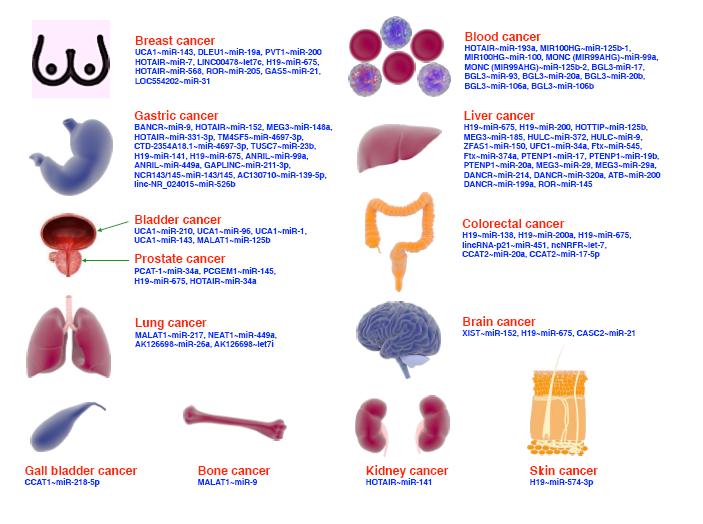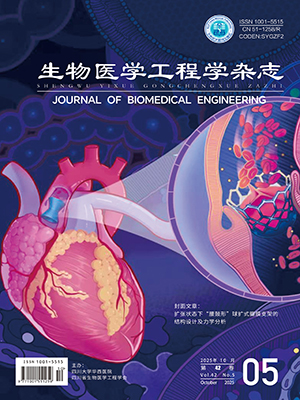| 1. |
Wu L Y, Zhao Q F, Liu J, et al. Efficient identification of Alzheimer’s brain dynamics with Spatial-Temporal Autoencoder: A deep learning approach for diagnosing brain disorders. Biomed Signal Process Control, 2023, 86(Part A): 104917.
|
| 2. |
Hu Y, Lai J, Wan B, et al. Long-term exposure to ELF-MF ameliorates cognitive deficits and attenuates tau hyperphosphorylation in 3xTg AD mice. Neurotoxicology, 2016, 53: 290-300.
|
| 3. |
Akbarnejad Z, Esmaeilpour K, Shabani M, et al. Spatial memory recovery in Alzheimer’s rat model by electromagnetic field exposure. Int J Neurosci, 2018, 128(8): 691-696.
|
| 4. |
Liu X, Zuo H, Wang D, et al. Improvement of spatial memory disorder and hippocampal damage by exposure to electromagnetic fields in an Alzheimer’s disease rat model. PLoS One, 2015, 10(5): e0126963.
|
| 5. |
Joshi A U, Mochly-Rosen D. Mortal engines: Mitochondrial bioenergetics and dysfunction in neurodegenerative diseases. Pharmacol Res, 2018, 138: 2-15.
|
| 6. |
Moreira P I, Carvalho C, Zhu X, et al. Mitochondrial dysfunction is a trigger of Alzheimer’s disease pathophysiology. Biochim Biophys Acta, 2010, 1802(1): 2-10.
|
| 7. |
Avila J. Common mechanisms in neurodegeneration. Nat Med, 2010, 16(12): 1372.
|
| 8. |
Geng D, Wang Y, Gao Z, et al. Effects of Alzheimer’s disease of varying severity on cardiac and autonomic function. Braz J Med Biol Res, 2022, 55: e11504.
|
| 9. |
陈尔冬. 心率变异性的研究及应用进展. 心血管病学进展, 2014, 35(4): 435-439.
|
| 10. |
Tiwari R, Kumar R, Malik S, et al. Analysis of heart rate variability and implication of different factors on heart rate variability. Curr Cardiol Rev, 2021, 17(5): e160721189770.
|
| 11. |
Zeki Al Hazzouri A, Haan M N, Deng Y, et al. Reduced heart rate variability is associated with worse cognitive performance in elderly Mexican Americans. Hypertension, 2014, 63(1): 181-187.
|
| 12. |
Lin F, Ren P, Wang X, et al. Cortical thickness is associated with altered autonomic function in cognitively impaired and non-impaired older adults. J Physiol, 2017, 595(22): 6969-6978.
|
| 13. |
谭如欣, 王欣, 殷涛, 等. 阿尔兹海默症转基因鼠生长过程中海马theta节律及行为学的实验研究. 生物医学工程研究, 2020, 39(2): 109-115.
|
| 14. |
Morris R G M. Spatial localization does not require the presence of local cues. Learn Motiv, 1981, 12(2): 239-260.
|
| 15. |
赵宪林, 方秀斌, 李东培. 大鼠血管性痴呆模型制作. 中国医科大学学报, 2002(3): 8-9,18.
|
| 16. |
Grubb S C, Churchill G A, Bogue M A. A collaborative database of inbred mouse strain characteristics. Bioinformatics, 2004, 20(16): 2857-2859.
|
| 17. |
李世杰, 唐俐, 周凡琳, 等. 不同月龄APP/PS1双转基因AD小鼠海马神经元线粒体的动态变化. 重庆医科大学学报, 2021, 46(10): 1141-1146.
|
| 18. |
Sprugnoli G, Munsch F, Cappon D, et al. Impact of multisession 40Hz tACS on hippocampal perfusion in patients with Alzheimer’s disease. Alzheimers Res Ther, 2021, 13(1): 203.
|
| 19. |
Toda T, Ito M, Takeda J I, et al. Extremely low-frequency pulses of faint magnetic field induce mitophagy to rejuvenate mitochondria. Commun Biol, 2022, 5(1): 453.
|
| 20. |
Ruggiero A, Katsenelson M, Slutsky I. Mitochondria: new players in homeostatic regulation of firing rate set points. Trends Neurosci, 2021, 44(8): 605-618.
|
| 21. |
Xie Y, Li Y, Nie L, et al. Cognitive enhancement of repetitive transcranial magnetic stimulation in patients with mild cognitive impairment and early Alzheimer’s disease: A systematic review and meta-analysis. Front Cell Dev Biol, 2021, 9: 734046.
|
| 22. |
Toledo M A, Junqueira L F. Cardiac autonomic modulation and cognitive status in Alzheimer’s disease. Clin Auton Res, 2010, 20(1): 11-17.
|
| 23. |
Mellingsæter M R, Wyller T B, Ranhoff A H, et al. Reduced sympathetic response to head-up tilt in subjects with mild cognitive impairment or mild Alzheimer’s dementia. Dement Geriatr Cogn Dis Extra, 2015, 5(1): 107-115.
|
| 24. |
Cheng Y C, Huang Y C, Huang W L. Heart rate variability in individuals with autism spectrum disorders: A meta-analysis. Neurosci Biobehav Rev, 2020, 118: 463-471.
|
| 25. |
Won D O, Lee B R, Seo K S, et al. Alteration of coupling between brain and heart induced by sedation with propofol and midazolam. PLoS One, 2019, 14(7): e0219238.
|
| 26. |
Vásquez-Trincado C, Pennanen C, Parra V, et al. Mitochondrial dynamics, mitophagy and cardiovascular disease. J Physiol, 2016, 594(3): 509-525.
|
| 27. |
欧阳葵, 梁培日, 吴挺国, 等. 极低频电磁场治疗对缺血性脑卒中大鼠的神经保护作用及其机制. 医学理论与实践, 2022, 35(24): 4141-4143.
|
| 28. |
Hadzibegovic S, Nicole O, Andelkovic V, et al. Examining the effects of extremely low-frequency magnetic fields on cognitive functions and functional brain markers in aged mice. Sci Rep, 2025, 15(1): 8365.
|
| 29. |
Cuccurazzu B, Leone L, Podda M V, et al. Exposure to extremely low-frequency (50Hz) electromagnetic fields enhances adult hippocampal neurogenesis in C57BL/6 mice. Exp Neurol, 2010, 226(1): 173-182.
|
| 30. |
Zhang Y, Liu X, Zhang J, et al. Short-term effects of extremely low frequency electromagnetic fields exposure on Alzheimer’s disease in rats. Int J Radiat Biol, 2015, 91(1): 28-34.
|




